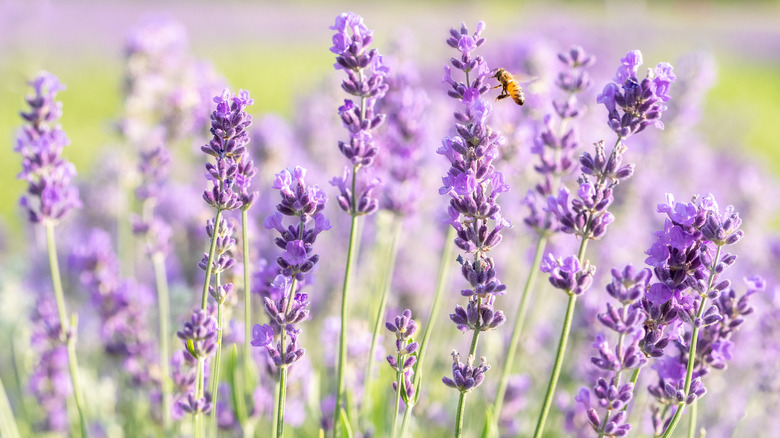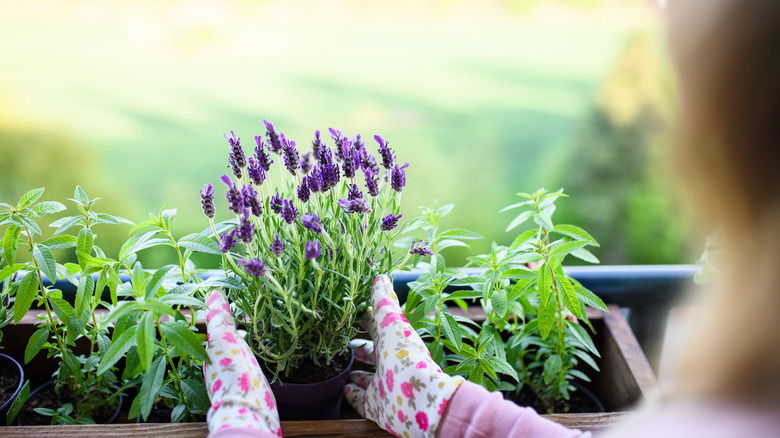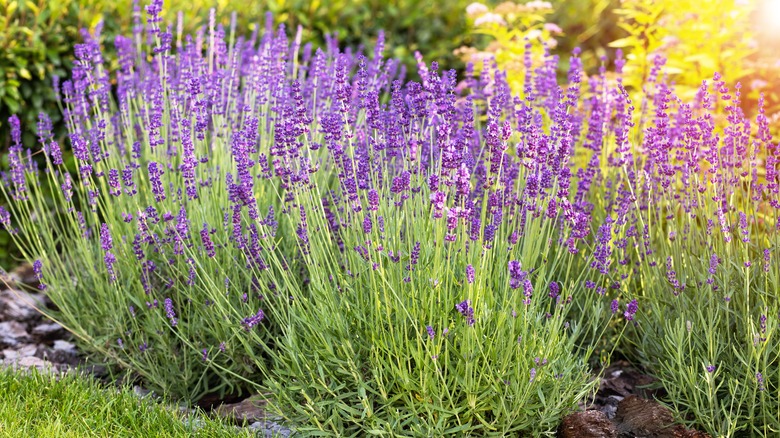Plant This Stunning Purple Perennial To Keep Pests Far Away
Lavender is widely celebrated for its fragrant, vibrant blooms, but its usefulness extends far beyond its aesthetic appeal. Gardeners and homeowners have long recognized lavender as a powerful tool in natural pest control, yet the reasons behind its efficacy are often underappreciated. The plant's aromatic compounds, primarily linalool and camphor, are more than just pleasant scents to humans — they act as potent deterrents for a variety of pests. These compounds interfere with the olfactory receptors of insects, confusing them and deterring them from entering the area. Unlike synthetic pesticides, lavender's natural properties ensure that it repels pests without introducing harmful chemicals into the environment.
The plant's pest-repelling abilities are versatile and wide-ranging. Common garden pests such as moths, fleas, flies, and mosquitoes are all repelled by the presence of lavender. Moths, for instance, are particularly susceptible to lavender's scent, which disrupts their ability to locate plants on which to lay eggs. Insects like mosquitoes and flies, which rely heavily on their sense of smell for survival, are similarly deterred by lavender's strong fragrance. Additionally, lavender's essential oils have been found to have fungicidal and antibacterial properties, further enhancing its role in protecting plants and garden areas from a broader spectrum of threats.
How strategic placement enhances lavender's effectiveness
The effectiveness of lavender as a pest deterrent is greatly influenced by where and how it is planted or placed. Try this clever propagation method to help your lavender thrive. Strategic positioning is crucial to maximizing lavender's pest-repelling properties. When planting lavender in a garden, consider placing it near entrances, patios, or windows — areas where pests like mosquitoes and flies are likely to enter. By creating a barrier of lavender around these vulnerable points, you can significantly reduce the number of pests that gain access to your home or outdoor living spaces.
Moreover, companion planting with lavender is an excellent strategy for protecting more vulnerable plants. Lavender's strong scent can mask the odors of nearby plants that might otherwise attract pests. For instance, planting lavender near vegetables like carrots, tomatoes, or lettuce can help deter aphids, whiteflies, and other common garden pests. Lavender's natural defense mechanisms create a less hospitable environment for these insects, reducing the likelihood of infestations. The plant's resilience and ability to thrive in various climates also make it a reliable companion in gardens across different regions.
Indoors, lavender's strategic placement is equally important, and it's easy to grow. Dried lavender sachets can be placed in closets, drawers, and other storage areas to repel moths and other insects that might damage clothing and linens.
Combining lavender with other natural deterrents for maximum impact
While lavender is highly effective on its own, combining it with other natural deterrents can create an even more formidable defense against pests. Pairing lavender with plants like rosemary, thyme, or marigolds can enhance its pest-repelling capabilities. Each of these plants has unique properties that, when combined, provide a comprehensive approach to pest control. Rosemary, for example, is known to repel mosquitoes and various insects, much like lavender. By planting these two together, you create a layered defense system.
Mint is another powerful companion for lavender in pest control. Its strong scent is particularly effective at deterring ants, flies, and mosquitoes. When lavender and mint are grown together, they create a potent natural repellent that covers a wide range of pests. Additionally, mint's rapid growth can help fill in spaces around lavender plants, ensuring that the area is densely packed with pest-deterring vegetation. This maximizes the effectiveness of both plants and creates a lush, fragrant garden.
Marigolds add yet another layer of protection when combined with lavender. Known for their ability to repel nematodes, aphids, and whiteflies, marigolds work in tandem with lavender to cover both the air and soil-based threats. Planting marigolds around the perimeter of a garden with lavender inside creates a double barrier that pests are unlikely to penetrate. Furthermore, these combinations of plants are all low-maintenance and can thrive together, making them an ideal choice for eco-conscious gardeners looking to reduce their reliance on chemical pesticides.


